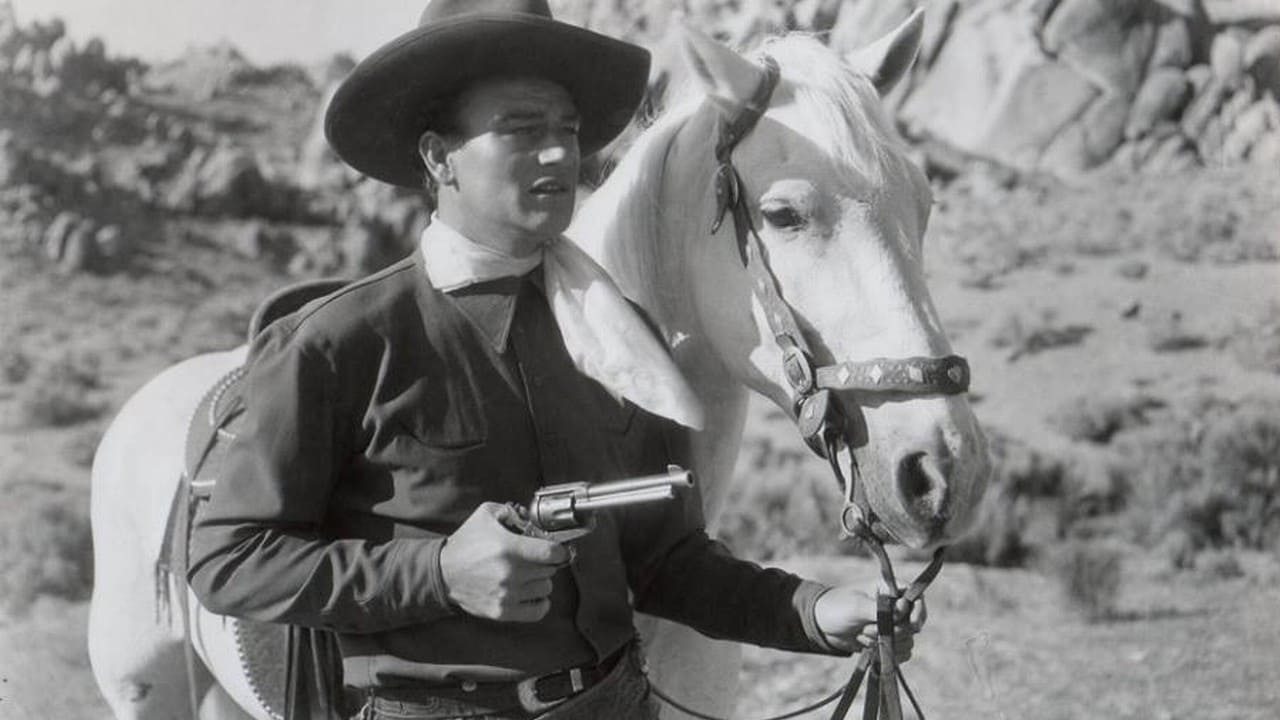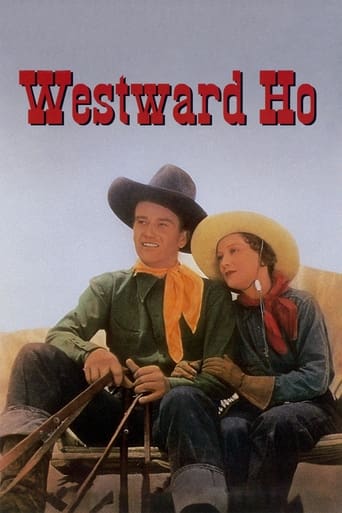


Instant Favorite.
... View Morebrilliant actors, brilliant editing
... View MoreA lot of perfectly good film show their cards early, establish a unique premise and let the audience explore a topic at a leisurely pace, without much in terms of surprise. this film is not one of those films.
... View MoreI enjoyed watching this film and would recommend other to give it a try , (as I am) but this movie, although enjoyable to watch due to the better than average acting fails to add anything new to its storyline that is all too familiar to these types of movies.
... View MoreThis is a pretty run of the mill John Wayne B-western of the 1930s with one major exception. Like his few 'Singing Sandy' films Wayne made during this era, the producers of this movie decided to make Wayne a singer---even though his singing voice was apparently rather scary. So, they dubbed him with a singer a bazillion octaves lower than Wayne's real voice--and the result is absolutely hilarious.As for the rest of the film, it had a moderately interesting plot. It begins years earlier and Wayne is a young boy going across the prairie in a wagon with his pioneer family. The group is attacked by bandits and the adults are all killed. Wayne is assumed dead and his younger brother is adopted by the bandits. Now, years later, Wayne still is searching for his lost brother as well as heading a crusade of SINGING vigilantes on their quest to rid the west of gangs of thieves. Naturally, being a movie, eventually Wayne and his long-lost brother end up on opposite sides--neither knowing the identity of the other.While the plot is silly, it was enjoyable and pretty typical in style to the bazillion Bs Wayne made through the 1930s. Fast-paced, enjoyable and entertaining.
... View MoreWhen new Republic Pictures was formed in 1935, they brought over a lot of talent from Lone Star Productions, including producers Trem Carr and Paul Malvern, director Robert North Bradbury, and box office draw John Wayne. All were involved in "Westward Ho", their first picture featuring 'The Duke'. Curiously, whether by accident or design, John Wayne's character goes by the name of John Wyatt, the same name he had in "Paradise Canyon", the final release from Lone Star.You can notice the improved production values and generally better story quality with Republic, even if the picture offers one of your standard brothers separated during youth tales. In this case, John Wyatt's family is ambushed by cattle rustlers in an opening scene, and younger brother Jim is taken by the gang, who's leader Whit Ballard (Jack Curtis) considers him feisty. Jim grows up an outlaw, while John, with the passing of years, is determined to find and get revenge on the bad guys who killed his parents. The young Jim was played by Dickie Jones, who grew up playing a whole host of cowboy and sidekick roles, and was probably the best stunt rider I've ever seen while backing up Jock Mahoney's 'Range Rider' in the 1950's.Probably the most unique feature of "Westward Ho" has to do with the idea of identifying John Wyatt's band of Vigilantes decked out in black shirts, white scarves and all riding white horses. My first thought was where did they ever get all those white horses from. They're an impressive sight, particularly when all lined up and ready to confront the bad guys. I had to stop and consider also how the term 'Vigilantes' seemed to carry a positive connotation in this story, unlike the more accepted definition one is used to. These vigilantes operated right out in the open and under the umbrella of the law, and most of the time made it look just a little bit too easy capturing the bad guys.One scene that will jump right out at you is when John Wayne's character serenades Sheila Mannors, more than obviously dubbed in a much deeper voice than Wayne's. It's not the first time Wayne is shown performing a song, it happened way back in his very first Lone Star picture, "Riders of Destiny". In fact, his character in that one was 'Singin' Sandy Saunders. Wayne was dubbed by a small handful of extras on the set, but you have to take your pick by film, as the guys weren't credited back then. In this one, the most probable suspect would have been Jack Kirk, who's in the cast as an uncredited Singing Rider. Director Bradbury's son Bill was the voice in 'Riders', who used the money he earned to help put himself through medical school.Oh yes, and I can't forget to mention Yakima Canutt, a regular in John Wayne's pictures, sometimes as a sidekick and sometimes as a heavy. In this one, he's one of Ballard's henchmen simply named Red, and I believe it's the only time I've ever seen him with a mustache. Probably to underscore the passing of years from the movie's opening scene to a span of some seventeen years later. Canutt's polished stunt work is evident throughout the story, especially in the old rope across the trail trick that takes out four of the bad guy posse. I still wince whenever I see one of those stunts, never knowing if any of the horses (or men) ever came out of the scene with a permanent injury.Here's something curious - why was it that when Ballard's gang held up the bank, the ruckus didn't start until they started riding away with guns blazing? They didn't shoot things up while robbing the bank, so why draw attention for the getaway? Something to think about.Anyway, if you're a fan of John Wayne, this one's not bad, offering a somewhat more mature and solidly built looking actor, even if it's only a couple of years beyond his starring roles for Lone Star. The finale of course by now is pretty standard, Wayne gets to hook up with his female co-star, and with Republic, he even gets to kiss her to close out the story!
... View MoreThis wonderful example of the early B western is tarnished by some pitiable horse falls that would not be tolerated in today's films. Two scenes in particular show the poor animals somersaulting and going down in a horrendous heap, sometimes on top of one another. Even knowing that the movie is over 70 years old; the sight of the poor animals in such distress still made me heart sick. The Running W appears to have been used liberally in this picture, which is otherwise well acted and produced. John Wayne gives an excellent performance along with a strong supporting cast, while the Owens Valley and Alabama Hills outside Lone Pine provide a realistic backdrop to the story.
... View MoreNewborn Republic Pictures utilizes the solid directoral ability of Robert Bradbury, and the presence of John Wayne along with Yakima Canutt and his troupe of stuntriders to produce this strongly scripted film of 1860s vigilante efforts to rid the Far West of outlaw bands that were involved in widespread robbery and cattle rustling. Bradbury, whose skill with Westerns dates back to the early silent period, directs and edits with a solid awareness of suspense, building his typically short scenes with sparse and, at times, stilted dialogue and an eye for proper cast placement which makes excellent use of defined personalities such as Wayne, Frank McGlynn Jr., and Glenn Strange, and gives particular value to the hard-riding stunt performers, who are splendid throughout this well-made (and musical) adventure filmed in California's Owens Valley, at the base of the Sierra Nevada.
... View More